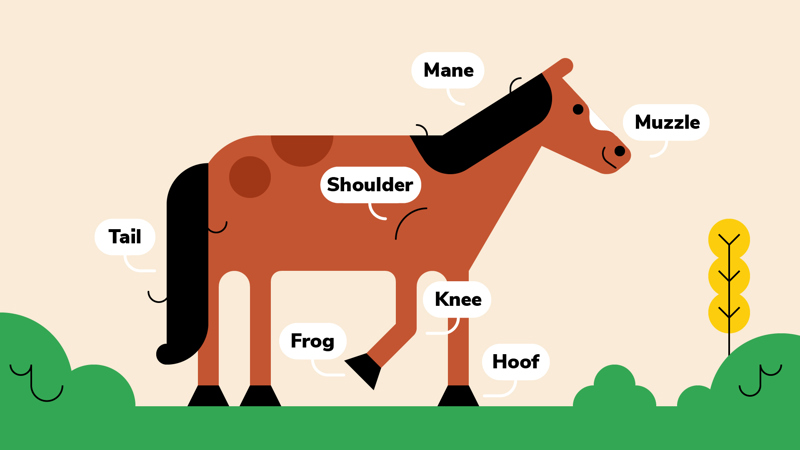
Heads, shoulders, knees and hooves
To watch in full screen, double click the video
The song
- Everyone should get into a circle. The person leading the game should check everyone knows the tune to ‘Heads, shoulders, knees and toes’.
- Everyone should sing these words to the tune of ‘Heads, shoulders, knees and toes’:
- While they sing, everyone should point to the matching part of their own body.
The actions
- Heads: touch your head.
- Shoulders: touch your shoulders.
- Knees: touch your knees.
- Hooves: touch your feet.
- Mane: flick your hair (or pretend to flick your hair).
- Tail: mimic a tail wagging or waving.
- Muzzle: point at your nose and pull your hand away to mimic a long mouth.
- Frog: lift your foot up and point at the bottom.
Reflection
This activity helped you develop skills. Is it funny to think that animals such as horses have some similar body parts to ours? What was different about horses’ bodies? Why is it helpful to know about a horse’s anatomy if you want to ride a horse? Was a song a helpful way to learn new information? When else might you use a song to help you learn and remember things?
This activity also helped you think about trying new things. Have you ever seen a horse in real life? Do you think you’d feel more comfortable around horses now you understand a bit more about their bodies? Do you think you’d feel more comfortable giving horse riding a go now you know a bit more about anatomy?
Safety
All activities must be safely managed. You must complete a thorough risk assessment and take appropriate steps to reduce risk. Use the safety checklist to help you plan and risk assess your activity. Always get approval for the activity, and have suitable supervision and an InTouch process.
- The pace is up to you – you might want to start slow while everyone learns the words and actions, and then speed it up.
- You could show everyone the anatomy sheet and ask them to make up their own songs.
- Repeat verses with new parts from the beginning, so that everyone has to remember all the parts learnt.
- Why not get in touch with a local stables to arrange a visit to see the horses? Someone from the stables may be able to talk to the group about the horses that live there, and explain even more about horses’ bodies.
Adapt the actions so they work for everyone in your group.
All Scout activities should be inclusive and accessible.
